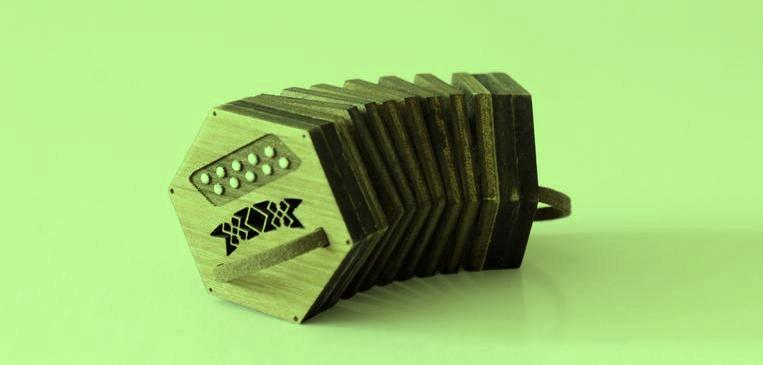
Concertina
Ita
La concertina, un particolare tipo di fisarmonica, fu inventata lo stesso anno della sorella maggiore, nel 1829, dal fisico inglese Charles Wheatstone.
Di sezione esagonale o ottagonale, la concertina è una piccola fisarmonica, anch’essa suddivisa in diversi tipi.
La concertina Inglese, nata per prima, è cromatica e ogni bottone produce la stessa nota sia aprendo che chiudendo il soffietto.
L’estensione standard è di tre ottave e una quarta, che nel modello soprano va dal SOL sotto il DO centrale e il DO tre ottave sopra, esattamente come il violino. La concertina Inglese è sorretta dai pollici del musicista tramite lacci regolabili in pelle, mentre due “L” metalliche permettono ai mignoli di reggere parte del peso.
Inizialmente la concertina fu impiegata nell’ambito della musica colta, per la quale era stata concepita, spesso trascrivendo repertori di altri strumenti musicali; in seguito ad un aumento della sua produzione, la concertina divenne accessibile alla classe operaia rendendola così uno strumento del folkrore irlandese.
Eng
The concertina belongs to a class of instruments known as Free Reed instruments, which also includes accordions and harmonicas. It was developed in 1829 and 1830 by Sir Charles Wheatstone.
At first the concertina was very much an instrument of the middle and upper class drawing room; in due course other firms such as Lachenal and Jeffries were founded (several by ex-Wheatstone employees) the cost of concertinas lowered, and the instrument moved out of the drawing room and into the world of popular music.
The 1970s revival of traditional irish music boosted the profile of this instrument, and its playing style has evolved notably over the years, with many contemporary musicians favouring a lighter playing style with a base that is more varied in terms of rhythm. The concertina is a close cousin of the accordion and falls into the ‘free-reed’ category of Celtic instruments. It has bellows and buttons on either end, and when depressed the buttons and bellows move in the same direction.
You can recognise the English version by the 4 parallel rows of buttons and by the supports for thumb and little finger on each end.
Normally the English concertina has 48 keys, but some models had 56. The extra 8 keys are at the high end of the scale and are thus not so useful on the treble, but they can be helpful in tenor-trebles and baritones.
Credits: concertina.info.com – wikipedia.it – irlandando.it – theirishplace.com – irlandaonline.it

